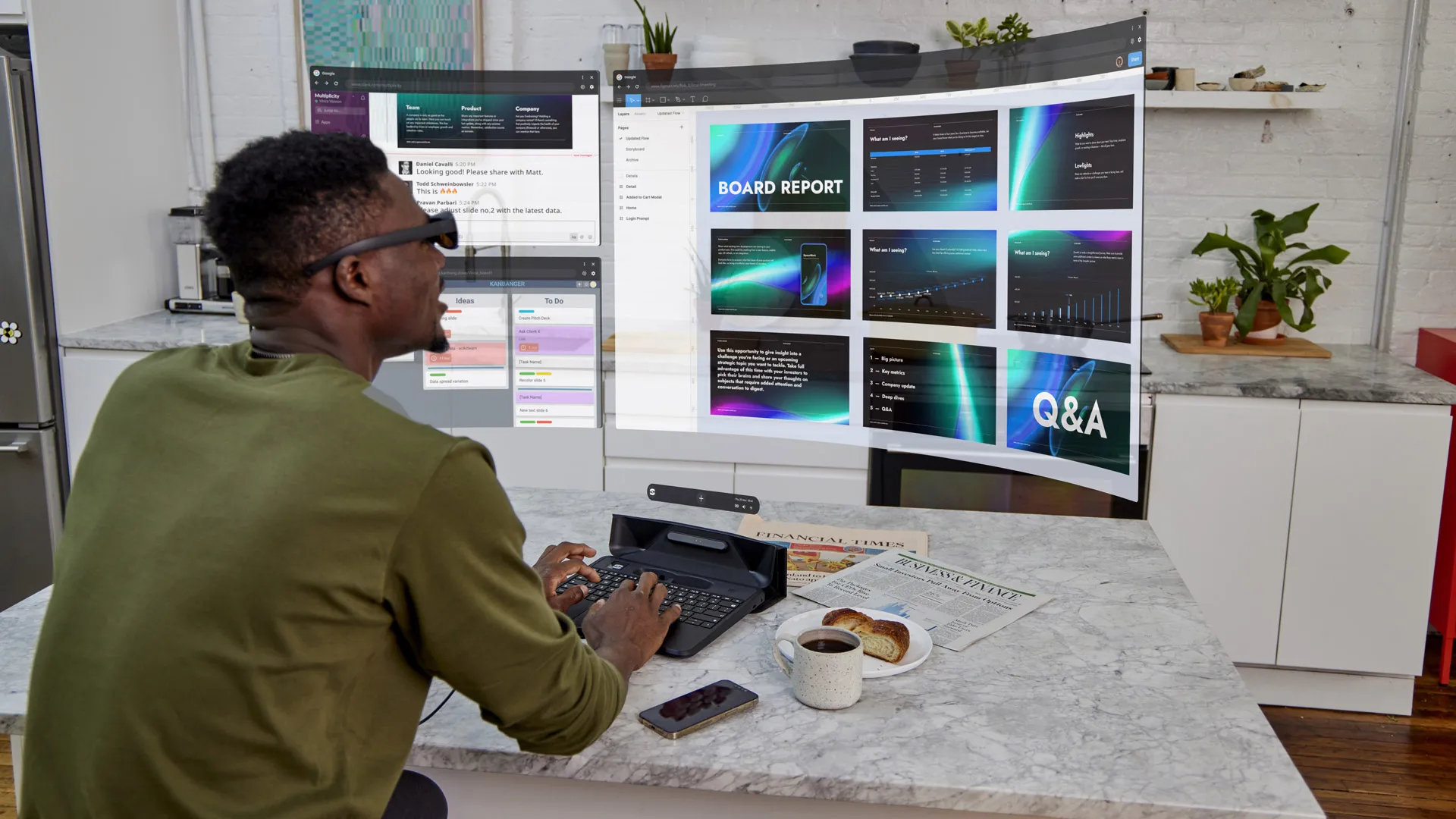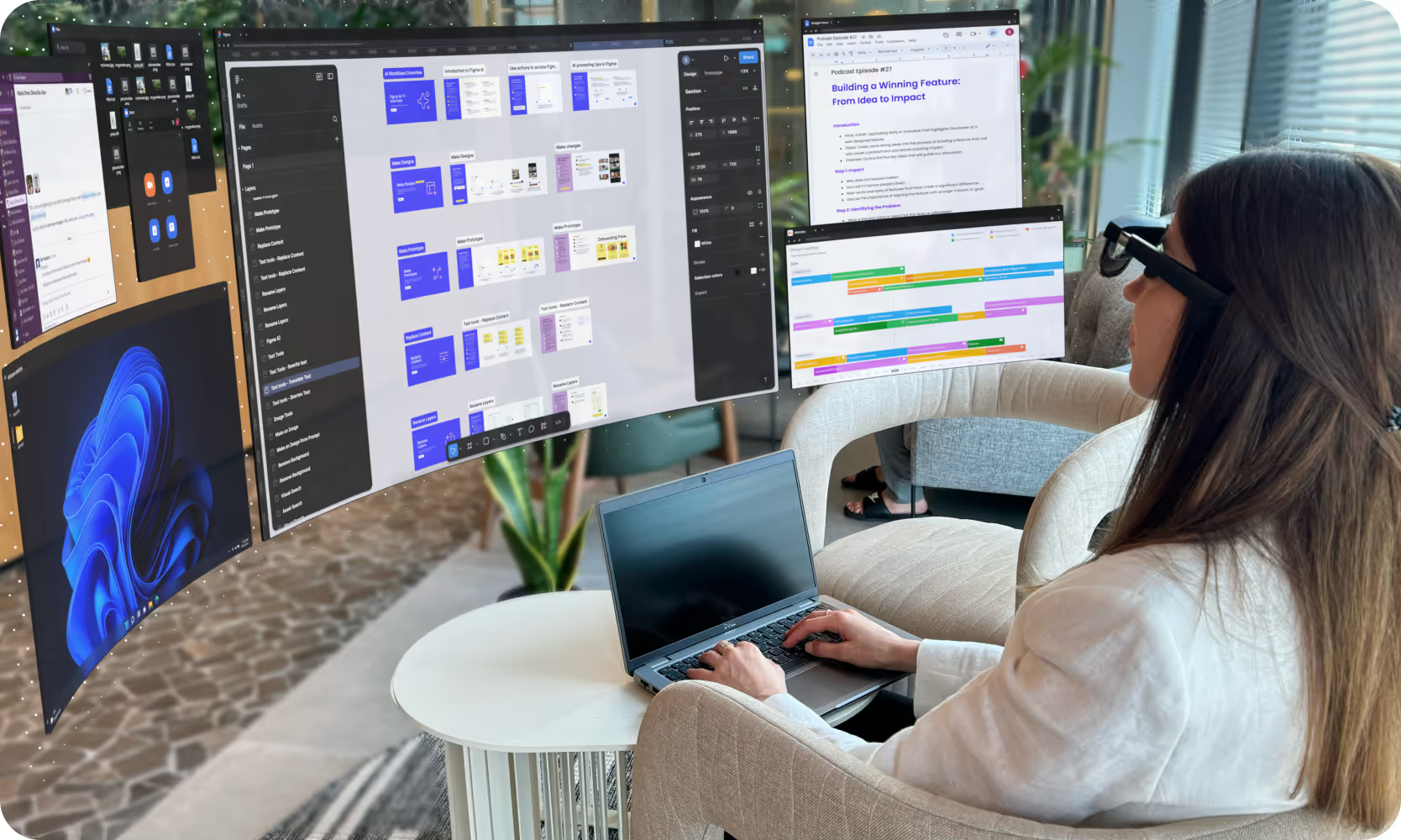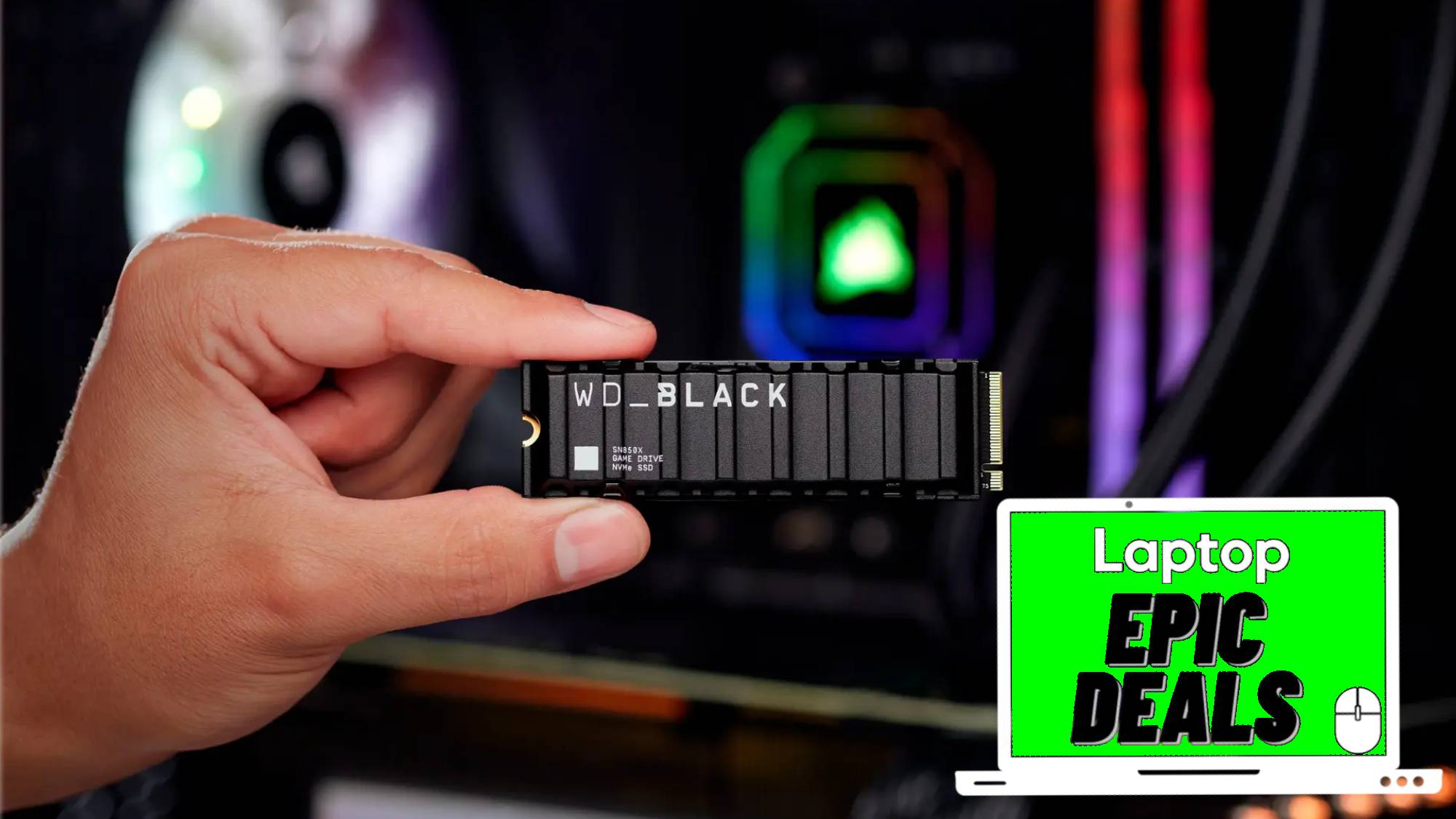The most ambitious laptop of 2024 is becoming an app for AI PCs
Sightful's Spacetop G1 gets a surprise software repurposing

For the last few months, my excitement has been slowly building around a unique laptop release from Sightful headed by two Magic Leap alumni, Tamir Berliner and Tomer Kahan, who wanted to take the traditional notebook in a bold new direction: Augmented reality.
The company's Spacetop G1 laptop was set to offer an all-new way of computing on the go, inviting users to the age of spatial computing through an augmented reality expansion that broke free from the traditional screen and keyboard experience of most laptops.
Much to my initial dismay, it would seem that the Spacetop G1 is no more. Last week, Sightful abruptly announced that after "overwhelming feedback" from its customers and the market, it was pulling the plug on the Spacetop G1.
However, far from throwing in the towel, Sightful has revealed that its new approach to spatial computing is to bring the AR framework behind the hardware to Windows AI PCs in early 2025.
Sightful's Spacetop G1: Gone but not forgotten
Every year we see some fascinating new laptop concepts, but very rarely do they make it to production. This year, I was sure that Lenovo's transparent laptop concept was the most ambitious laptop design I was going to see — until I came across Sightful's Spacetop G1, that is.
The Spacetop G1 was a breakthrough product designed to spearhead the spatial computing experience for laptops.
Where most laptops offer a traditional clamshell display and keyboard layout, the Spacetop G1's deck was unique, pairing the conventional laptop deck with a folio-like back stand and a pair of XREAL Air 2 Ultra smart glasses.
Stay in the know with Laptop Mag
Get our in-depth reviews, helpful tips, great deals, and the biggest news stories delivered to your inbox.
These AR glasses were the gateway to the entirety of Sightful's Spacetop G1 visual experience, offering an expansive 100-inch portal to a virtual array of windows and panels all private to the wearer with full 6DoF tracking (six degrees of freedom, similar to that of VR/AR headsets).

The Spacetop G1 had a lot going for it, but it did have its weaknesses. For starters, the laptop would only run SpaceOS, a proprietary operating system based on Android.
Beyond this, the Spacetop was also fixed to using only one type of AR smart glasses, which were hard tethered to the device.
Perhaps the Spacetop G1's biggest problem was its $1,900 price tag. Emily Wang, the co-founder of VITURE, an AR glasses maker responsible for popular smart glasses like the VITURE Pro XR, agreed to as much when in June she told Laptop Mag "The concept of an AR laptop is certainly an interesting idea, but I foresee issues in its implementation, especially as it is/if it is Android based."
On the Spacetop G1's pricing, Wang continued: "For many, what they get may not outweigh what they sacrifice to get it.
At that price point, users could just as easily get a MacBook (or a premium Windows laptop) and a pair of XR glasses like ours."
That's not to say that Wang was dismissive of the Spacetop G1. In fact, Wang told Laptop Mag "I really appreciate and respect the innovation required for a product like this. It's still very cool to see."
However, as Wang states, when it comes to capturing people's interest in AR "people have to see it to believe it," and the Spacetop's original price point and limitations would have limited how many people would be willing to take the leap to an AR laptop.
Spacetop for Windows: Spatial computing for all
Sightful is now taking the tech behind its Spacetop G1 laptop and repurposing it for Windows AI PCs and a wider selection of compatible AR glasses.
The most ambitious laptop of 2024 will now be remolded into an AR software engine that will become available for download in early 2025.
If, as VITURE's Emily Wang says, people need to see it to believe it, then Sightful's new software approach will make its AR desktops more available than ever at a much lower price point.

Sightful's software will now act as a gateway for bringing spatial computing to AI PCs. You'll still need a pair of AR glasses, but they come at a far lower price than the Spacetop G1 was targeting.
Many AR smart glasses are available for around $300 and can be paired with any DisplayPort over USB-C capable device, including laptops, smartphones, tablets, and handheld gaming PCs.
Software like Sightful's seeks to take the "wearable display" element of AR glasses and transform them into full AR experiences that replace your 13, 15, or 16-inch laptop's display with a giant 100-inch 3DoF/6DoF virtual canvas.
It's a new direction for the company, and hopefully one that pays off with broader adoption of its AR framework, making it easier for more people to experience spatial computing at a fairer price.
If you want to be among the first to use Sightful's new Spacetop software, you'll need a pair of AR frames and to sign up to the company's Explorer Program waiting list. Sightful has not yet stated which AR glasses will be compatible with its software.
More from Laptop Mag

Rael Hornby, potentially influenced by far too many LucasArts titles at an early age, once thought he’d grow up to be a mighty pirate. However, after several interventions with close friends and family members, you’re now much more likely to see his name attached to the bylines of tech articles. While not maintaining a double life as an aspiring writer by day and indie game dev by night, you’ll find him sat in a corner somewhere muttering to himself about microtransactions or hunting down promising indie games on Twitter.
